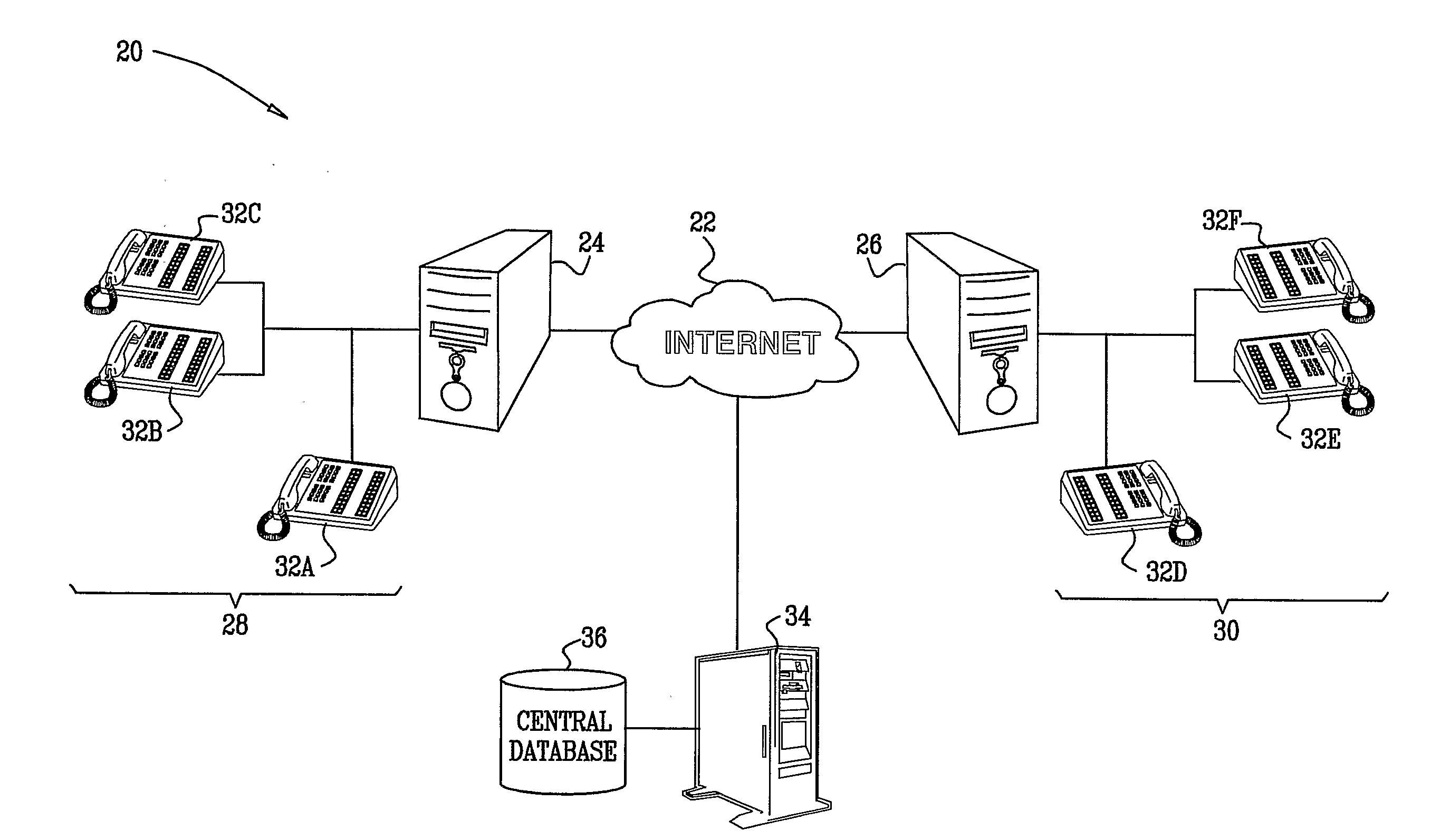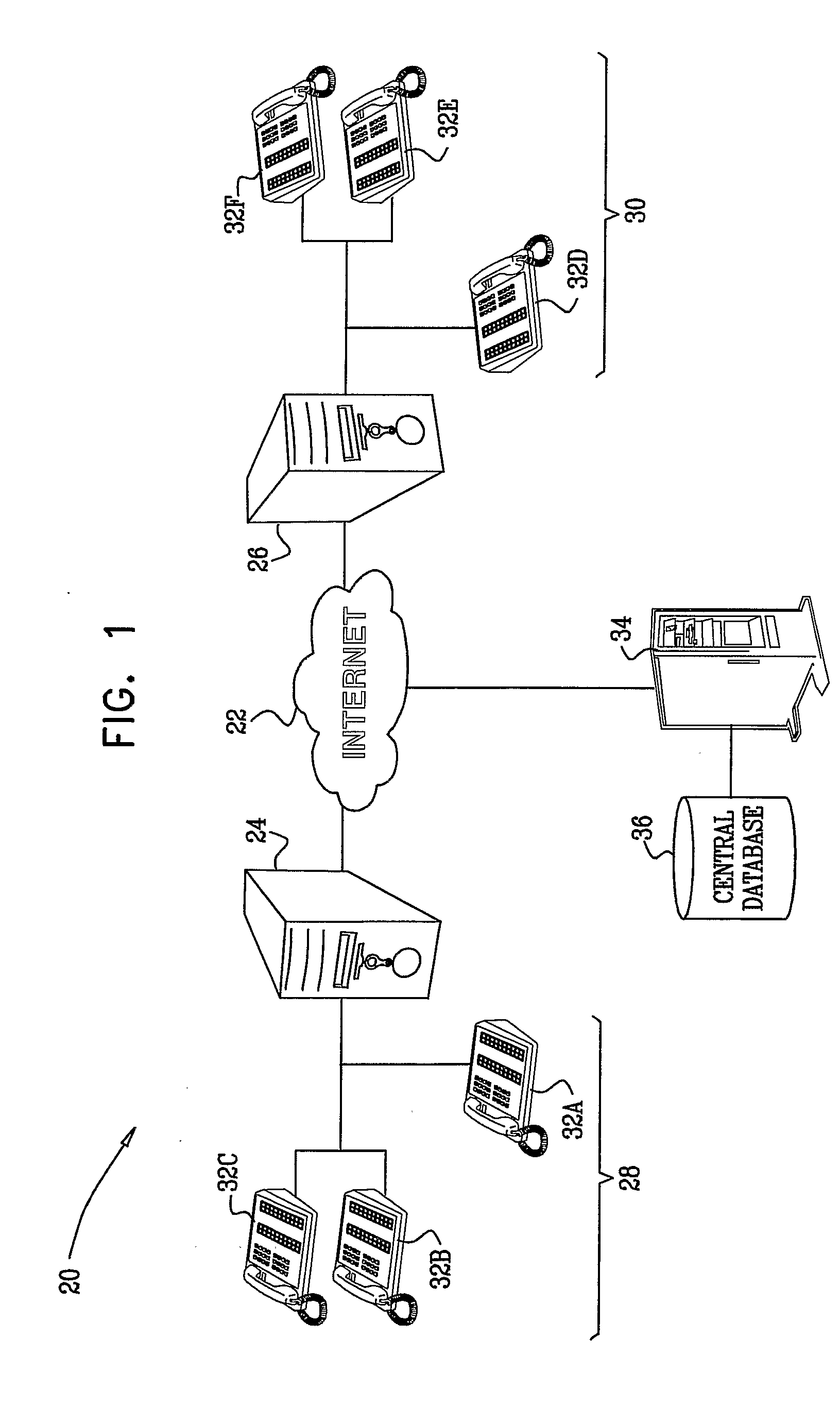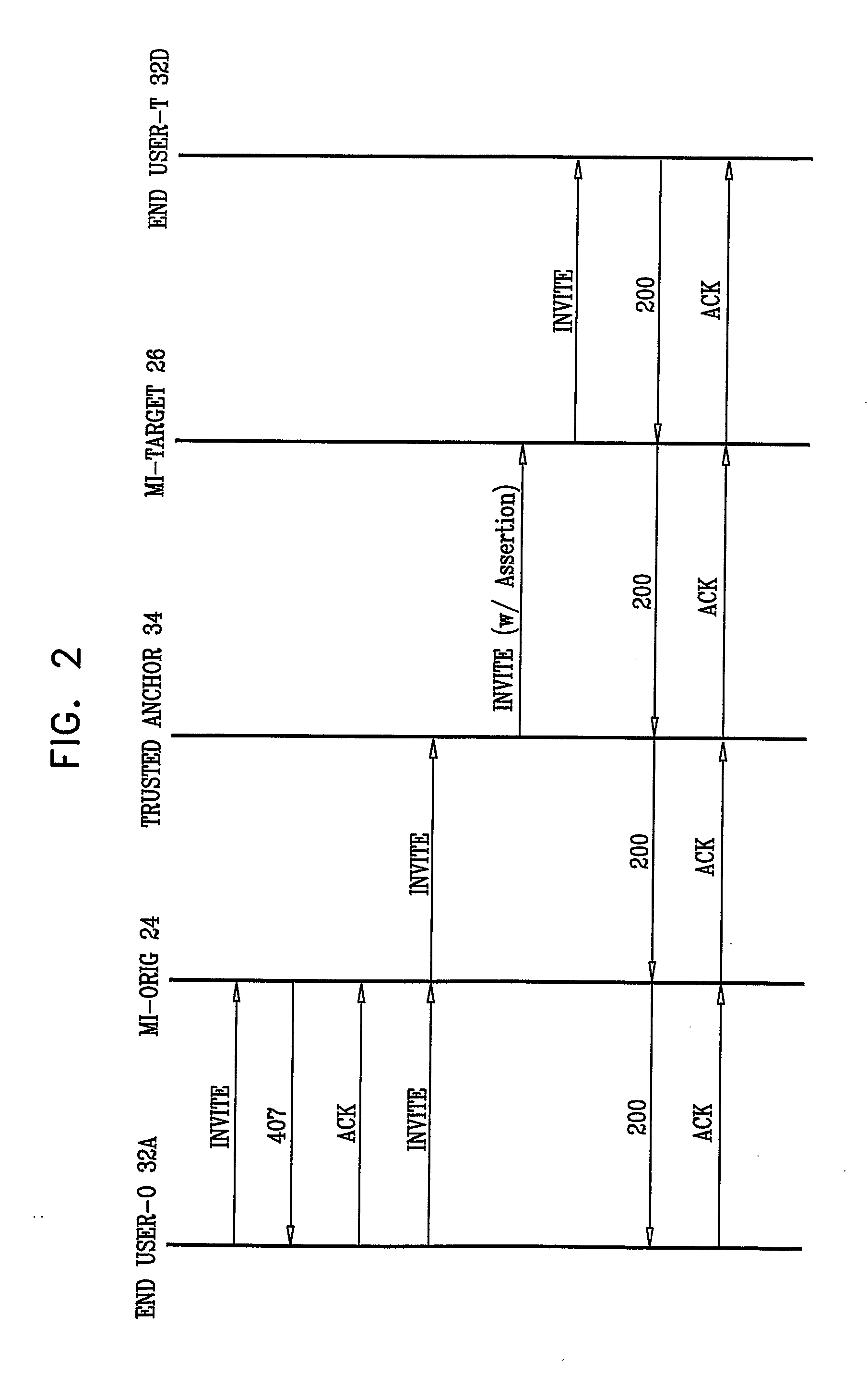Detection of spit on VOIP calls
a technology of spit and voip, applied in the field of telephone communications, can solve the problems of bulk unsolicited messages, spam can affect any system, and does not offer a general privacy or identity model suitable for use between different trust domains, and achieve the effect of improving the filtering of spit calls
- Summary
- Abstract
- Description
- Claims
- Application Information
AI Technical Summary
Benefits of technology
Problems solved by technology
Method used
Image
Examples
Embodiment Construction
System Overview
[0034]FIG. 1 is a block diagram that schematically illustrates a system 20 for Internet telephony, in accordance with an embodiment of the present invention. The system connects member islands 28 and 30 via a packet network 22, such as the public Internet. In the context of the present patent application and in the claims, an “island” refers to an organization that aggregates Internet telephony traffic among a set of end-user terminals, such as the sets of terminals 32A, 32B, 32C and 32D, 32E, 32F, . . . (which are referred to herein generically as simply terminals 32). Each terminal comprises a VoIP-enabled telephony device, such as a networked computer with an audio interface and suitable software, or a dedicated Internet telephone. Each island 28, 30 is connected to network 22 by a respective border server 24, 26, such as a SIP proxy, IP private branch exchange (PBX), or router configured as a session border controller. An individual island may comprise, for exampl...
PUM
 Login to View More
Login to View More Abstract
Description
Claims
Application Information
 Login to View More
Login to View More - R&D
- Intellectual Property
- Life Sciences
- Materials
- Tech Scout
- Unparalleled Data Quality
- Higher Quality Content
- 60% Fewer Hallucinations
Browse by: Latest US Patents, China's latest patents, Technical Efficacy Thesaurus, Application Domain, Technology Topic, Popular Technical Reports.
© 2025 PatSnap. All rights reserved.Legal|Privacy policy|Modern Slavery Act Transparency Statement|Sitemap|About US| Contact US: help@patsnap.com



